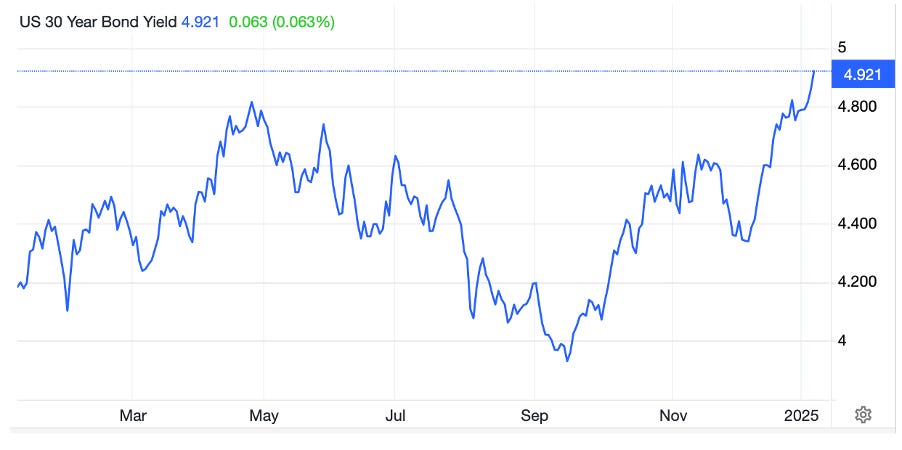The message of higher bond yields
Rising bond yields signal increasing credit risk. It indicates that the largest credit bubble in history is about to burst. I assess the consequences for credit markets, currencies, and gold.
The yield on the US long bond has definitely broken into new high ground post-covid. It should be noted that interest rates and bond yields primarily reflect default risk. In aggregate, the banking system cannot reduce credit outstanding, only lessening lending and duration risks. The resulting credit shortage drives up interest rates as indebted borrowers seek to extend their loans. Today, these distressed borrowers include highly indebted governments, led by the US. The chart below shows how lending risk to the US Government has been increasing over the last three months, measured in the yield for the 10-year UST note.
Having observed a number of credit cycles over the decades, I have noticed the value relationship between bonds and equities. Towards the end of a period of credit expansion, equities become increasingly driven by momentum rather than value. At the same time, bonds undergo the first phase of rising yields. This is taken by the momentum bulls as irrelevant, or perhaps evidence of a growing economy and higher corporate profits to come. With the additional stimulus of a Trump presidency, that is roughly where US market sentiment stands today.
As the chart of the US long bond above shows, yields found a bottom in late-September before moving significantly higher. Evidently, a second phase of yield increases is in progress with the long bond yield having already risen 100 basis points to levels above those of last May. Based on this chart, if nothing else, alarm bells should be ringing in all credit-driven markets.
This brings us to a destructive stage in the bond/equity relationship. A new phase of rising bond yields will prove fatal for momentum driven equity markets. Sober value considerations are sure to return. That is why recent developments in bond markets must be taken extremely seriously. And the current credit bubble has become so extreme that the return to value-reality in equities promises to be a very violent transition, because the gap over bonds has become exceptionally large. It is in fact a record, as my next chart shows.



